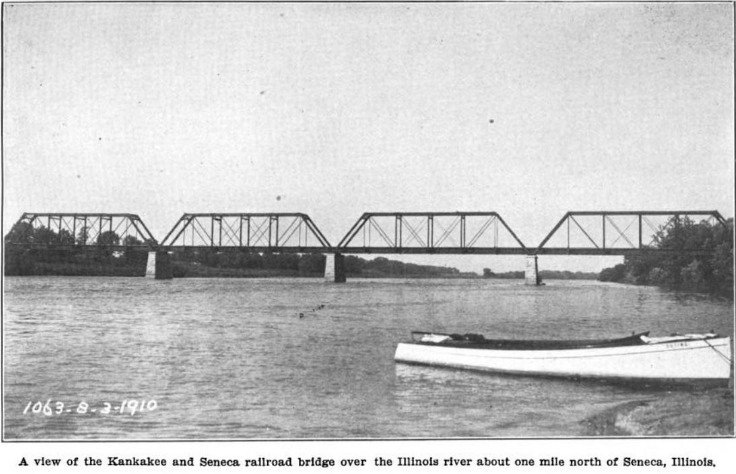Located between Morris and Seneca, this large through truss bridge lift bridge crosses the Illinois River.
It is unknown exactly when the bridge was built, but it is believed that it was constructed in approximately 1900.
Originally, the bridge was constructed with four 6-panel pin connected Pratt Through Trusses. These trusses were set onto stone piers.
In 1916, a train crashed through the southern span of this bridge. As a result, that truss was replaced with a pair of deck girder spans in 1916.
Another alteration was made to the bridge in approximately 1932, when the center of the remaining trusses had a lift span installed. Similar to the situation at Ottawa, Illinois; this lift mechanism was incorporated into the existing trusses.

1910 View of Bridge; Courtesy Google Books
Today, the bridge serves as a short spur to a Dupont plant on the south bank. The bridge is unique for its alterations that are old enough to be historic. Further alterations included the encasement of the original 1880s piers and abutments with concrete.
Overall, the bridge remains in good condition. The future of the structure is unknown, as it is little used and is a navigation hazard.
The author has ranked this bridge as being regionally significant, due to the unique design.
The photo above is an overview.
| Upstream | Aux Sable Lift Bridge |
| Downstream (North Canal) | Marseilles Nabisco Bridge #1 |
| Downstream (South Canal) | Marseilles Nabisco Bridge #3 |
